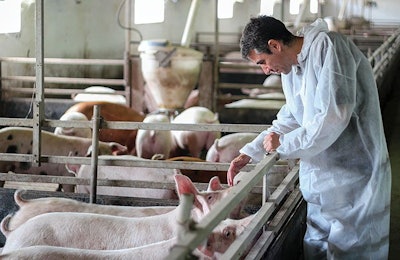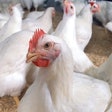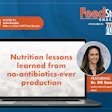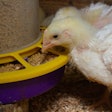
When examined at farm level, many antibiotic-reduction programs fail to achieve the lofty goals set by governments. The main reason in most cases is the one-dimensional approach followed by those involved in such attempts, and this includes farmers and their consultants. As it happens, the majority of antibiotic-reduction programs focus around the replacement of antibiotics with certain feed additives — on a one-to-one basis without any further considerations. Lamentably, no single additive has so far proven capable of replacing the growth-promoting abilities of antibiotics. And, in the case of programs where no antibiotics are used ever, even for therapeutic reasons, there is no combination of additives strong enough to suppress disease at farm-practical conditions.
Removing antibiotics and adding certain feed and (or) water additives is certainly a part of the methodology required to reduce or replace antibiotic usage, but it is not the central point — if such a thing exists. Instead, a broader farm-wide approach is required that starts by realizing that reducing antibiotic usage entails increased cost of production. This latter part is not widely realized, or even accepted, as governments who desire antibiotic usage reduction have not enacted measures to ensure the extra cost is either shared by all parts of the food chain, or even better, by those who benefit the most from such policies — namely the consumers. Nevertheless, reducing antibiotic usage at the farm level remains a costly undertaking that focuses on four pillars, as explained below:
Pillar 1: Reduced exposure to bacteria
The first step in reducing antibiotic usage at farm level is to undercut the purpose of antibiotics being there in the first place. That is, antibiotics aim to reduce the bacterial pressure on animals raised at commercial farms. Bacteria can either cause diseases (pathogens) or simply rob nutrients for their own benefit. It is the latter case we try to avoid with growth-promoting levels of antibiotics, and now with most feed additives trying to replace their effect. In general, however, we must start by reducing bacterial pressure in all aspects of farming, and this includes higher levels of hygiene, bio-protection, enhanced cleaning protocols and altered production methods. Everything done to reduce the exposure of animals to unnecessary levels of bacteria in their environment, air, feed and water will help reduce dependence on antibiotics. Without this first step, everything less is doomed to fail.
Pillar 2: Increased animal resistance to pathogens
Even subclinical exposure to pathogenic bacteria can reduce animal performance, and although feed additives can attack such bacteria with some success, there is another largely ignored way to go about it: to increase animal immunity against pathogens. This can be done either by a more robust vaccination program, by changing certain production methods and, of course, by using certain feed additives. The latter are but a minority of the available products designed to replace antibiotics, mostly because the research required to prove their efficacy is lacking due to high cost, and also because there is a tendency to buy products to solve problems instead of preventing their appearance. In essence, this remains an area that requires further attention because an animal highly susceptible to pathogens is difficult to keep from getting affected, especially when its surroundings are compromised in terms of bacterial load (see Pillar 1).
Pillar 3: Changes in nutrition to starve pathogens
Antibiotics previously used in feed were aiming at gut pathogens. These bacteria used feed nutrients to proliferate at the expense of their host. The same of course holds true for beneficial gut bacteria, which above certain levels just deprive the animal from useful nutrients. Thus, when designing feeds for animals that will not be treated with antibiotics, one has to focus on two formulation principles: deprive the pathogenic strains from what they need most, protein, and provide beneficial bacteria what they need most, fiber. The right balance will cause the beneficial bacteria to overtake the pathogenic ones. Keeping overall bacterial pressure low is the aim of the fourth and final pillar in this exercise.
Pillar 4: Feed additives that suppress bacteria load
Feed and water additives that suppress overall bacterial load, one way or another, abound in the market. It is a matter of finding those specific enough to match the rest of the program to cause an impact significant enough to close the gap. That such additives are needed is not the question. What is questioned is their use as the only approach ignoring what needs to come before them, namely all that have been described above. When the previous steps have been followed successfully, then such additives become highly effective. From another point of view, it can be argued that when trials fail to provide a positive answer in regards to most such additives it is because there has been an unfair setting, where everything depended on additives alone.
A strategic approach
Whether or not it will be possible to use no antibiotics at all remains a point of discussion. What is certain today is that we can reduce antibiotic usage — for all purposes, including therapy — but not by an alternative product that has yet to be discovered. It takes money, time, effort and a strategic approach that involves intervention at animal facilities and production methods, farm-level health protocols, changes in nutrition and lastly, additives that will complete the picture.















